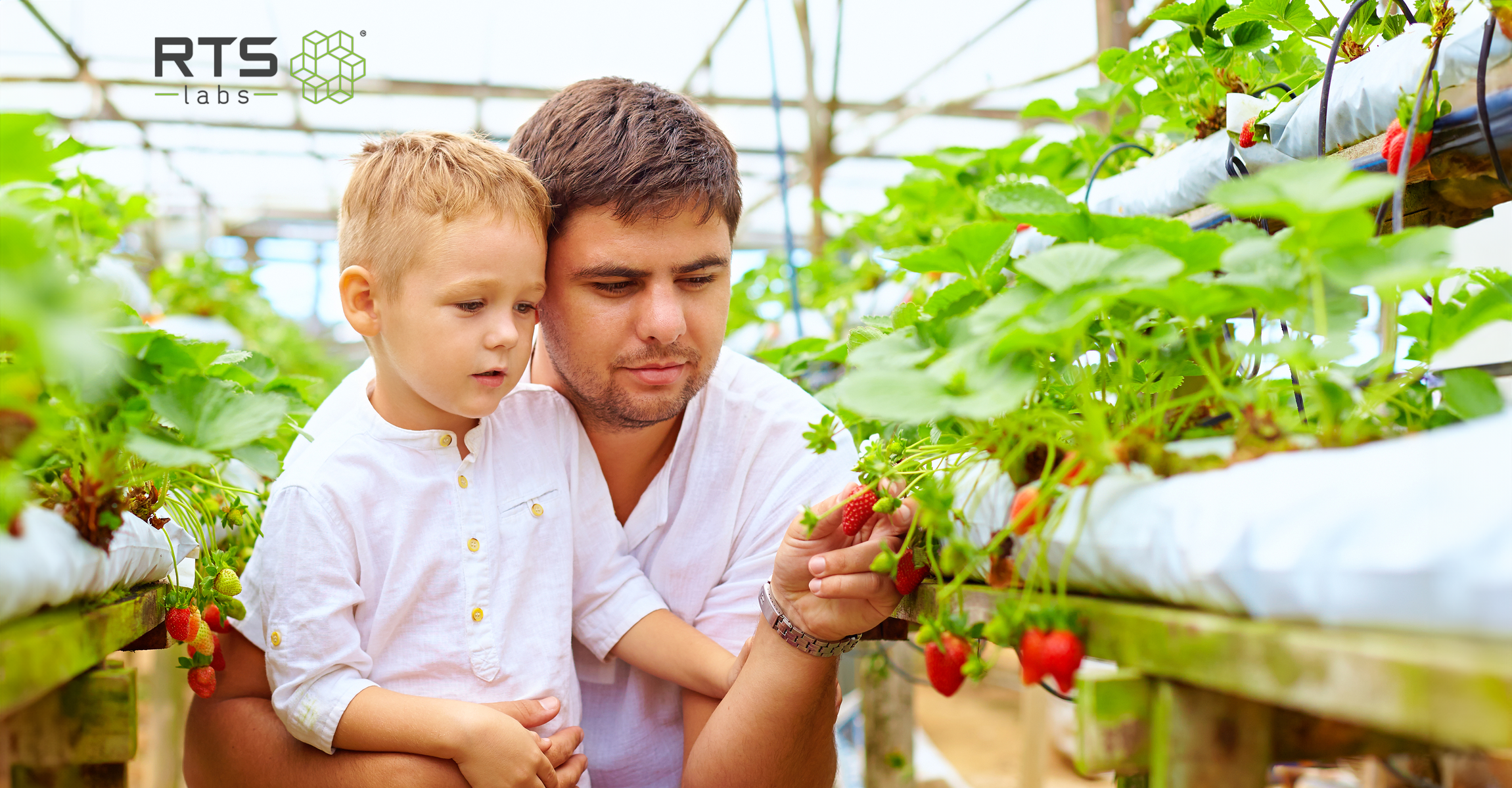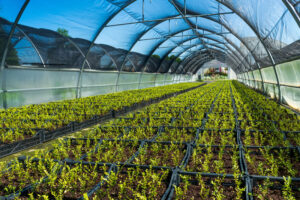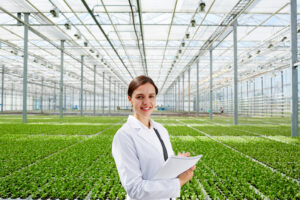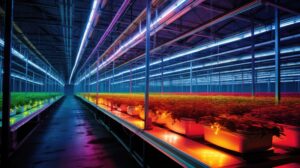Farming has always been about working with nature, but now technology is making that partnership smarter. With growing demands on global food production and the unpredictable effects of climate change, traditional methods are no longer enough. Farmers need better tools to make fast, informed decisions, and that’s where Artificial Intelligence (AI) steps in to create AI-powered farming.
This article looks at how AI can turn raw data, from soil quality and water levels to weather forecasts, into clear, actionable insights. These AI-driven tools aren’t just a luxury; they are becoming essential for farmers looking to boost yields, manage resources effectively, and tackle modern agricultural challenges head-on. By embracing AI in sustainable agriculture, farmers can focus on precision farming that improves efficiency and sustainability without wasting time or resources.
The Growing Importance of AI in Agriculture
Precision agriculture with AI isn’t just another buzzword in farming; it’s a practical tool that’s already making a difference. While traditional methods rely on past experiences or gut instincts, AI leverages real-time data and predictive algorithms to give farmers clearer insights. From monitoring soil health to predicting the best planting times, AI technology makes decision-making faster and more accurate.
The Challenges Facing Modern Farming
Farming today is tougher than ever. The world’s population is growing fast, which means the need for food will increase in the coming decades. Experts say that the food production has to be increased by about 70% by 2050 to meet this rising demand. But here’s the challenge: the resources farmers rely on, like land and water, aren’t growing with the population. This means farmers have to find ways to produce more with less.
On top of that, climate change is making farming even harder. Unpredictable weather – like floods, droughts, and sudden temperature shifts – makes it difficult to maintain good crop yields. Farmers can no longer count on the usual growing seasons and face increasing uncertainty about their harvests. Because of these problems, farmers need new tools and strategies to keep producing food efficiently and sustainably.
How AI is Transforming Agriculture
AI is becoming an essential tool in modern farming. Unlike traditional methods that rely on routine, AI uses data from sources like soil conditions and weather forecasts to help farmers make quicker, smarter decisions. For instance, AI can suggest the best time to plant or water crops based on current conditions, adjusting to changes in real time.
What’s more, AI learns and improves over time, allowing farmers to stay ahead by predicting future needs. This helps save resources like water and fertilizer, reduce waste, and keep crops healthy, making farming more efficient and sustainable in an unpredictable environment.
AI-Enabled Soil Analysis
Soil health is the foundation of good farming, and AI helps farmers understand what’s happening beneath the surface. These advanced tools give farmers a clear picture of their soil’s composition, identifying which nutrients are present and which are lacking. This eliminates the guesswork, allowing farmers to know exactly what the soil needs to support their crops.
AI in sustainable agriculture doesn’t just analyze what’s in the soil now. It also predicts what the soil will need in the future by looking at patterns and data from past seasons. This forward-thinking approach helps farmers plan nutrient management more efficiently so they add the right nutrients at the right time, keeping their soil healthy and productive.
Precision Agriculture through AI
Precision agriculture is one of the key advantages AI brings to farming. Instead of treating an entire field the same way, AI allows farmers to tailor their approach to each section of their land. For example, AI tools can determine how much fertilizer and pesticide each area of the field needs, reducing waste and making sure that crops get exactly the care they need without overusing resources.
This more focused approach saves farmers money, conserves valuable resources, and helps protect the environment. AI’s ability to analyze and respond to changing conditions in real time makes farming more efficient and sustainable.
Case Studies
A case study from Brazil used AI-driven models, including random forests (RF) and support vector machines (SVM), to predict soybean yields across major farming regions. These models analyzed weather and soil data to estimate yields up to 90 days before harvest, improving crop management and planning. With a prediction error range between 9.2% and 41.5%, the study showed the potential of AI in sustainable agriculture, and in large-scale agricultural planning, helping farmers make better-informed decisions.
This approach highlights AI’s role in increasing productivity and sustainability in soybean farming at the national level.
Leveraging Water Data with AI
Effective water management has always been a balancing act for farmers. Using too much or too little water can have major consequences, both for crops and the environment. AI steps in by offering smarter, more responsive ways to use water. By analyzing current conditions, precision agriculture with AI helps farmers make the most out of each drop, ensuring that water is used where and when it’s needed without waste.
Smart Irrigation Systems
In traditional farming, irrigation often involves manual timing or pre-set schedules, but AI can change that by making irrigation responsive to real-time conditions. AI systems monitor factors like soil moisture, weather patterns, and even crop needs to adjust water levels automatically. With this approach, farmers no longer have to guess when and how much to water. Instead, AI fine-tunes the process, keeping crops healthier, and limits the wastage of water.
AI for Water Resource Management
AI can go beyond irrigation by helping farmers plan their overall water usage more carefully. By looking at data such as past weather patterns, soil conditions, and forecast models, AI can give farmers a clearer picture of potential challenges, like upcoming droughts or shortages. With this knowledge, farmers can distribute water more carefully across their land, focusing on areas that need it most and minimizing unnecessary use.
Case Studies
A case study from Uttar Pradesh, India, explored the use of AI-driven precision irrigation in pea farming to address water shortages and improve yields. By integrating AI with precision irrigation, farmers could monitor weather, soil conditions, and crop needs in real-time, allowing for optimized water distribution. This resulted in significant water savings and enhanced legume productivity. AI provided tailored irrigation schedules that reduced water waste, improved crop health, and promoted sustainable farming.
The findings demonstrated that technology and AI-driven farming solutions could offer cost-effective solutions to water management challenges, paving the way for more efficient and resilient agricultural practices.
Integrating Climate Data through AI
Farmers face increasing challenges from unpredictable weather patterns, such as droughts and storms, which can severely affect crops. AI helps by turning complex climate data into clear insights. It not only predicts weather but also offers tailored advice on crops and planting schedules, enabling farmers to make proactive, informed decisions.
Advanced Weather Forecasts
Precision agriculture with AI systems analyzes massive amounts of weather data, predicting not only regular weather shifts but also extreme conditions like heat waves, storms, or unexpected frost. These forecasts are more precise, giving farmers the chance to take early action, whether that’s protecting their crops or altering irrigation schedules.
Crop Selection and Timing
Based on these weather models, AI can suggest the most suitable crops for the predicted climate conditions. For example, if a season is expected to bring unusually dry conditions, AI might recommend drought-resistant crops. It also helps farmers adjust their planting times to avoid extreme weather, boosting their chances of a successful harvest.
Empowering Farmers with AI Tools
AI is becoming a major tool in farming, not just for its advanced features but for its ease of use. With mobile apps and simple software, farmers can now make data-driven decisions effortlessly. AI platforms are designed for accessibility, allowing farmers to view real-time data on crops, soil, and weather, leading to more precise farming.
Mobile Apps
Farmers can now access AI-driven tools right from their smartphones, helping them make real-time decisions in the field. These apps simplify data collection, offer instant weather or soil updates, and even provide tailored advice for improving yields.
Real-Time Decision Support
AI tools can track various data points, from moisture levels to crop growth, and display it in easy-to-understand visuals. This allows farmers to act quickly based on current conditions, whether adjusting irrigation or modifying planting schedules.
Along with these platforms, education plays a key role in making AI truly useful for farmers. Technology is only as effective as the people using it, and that’s where training programs come in. Farmers are being taught how to use AI tools confidently, gaining the skills they need to maximize the benefits of these new technologies.
Training Programs
To help farmers get the most out of AI, specialized programs are teaching them how to navigate these tools. From basic app usage to understanding the data insights provided, these programs are building confidence and making AI a valuable part of farming.
Farmers aren’t in this alone. Collaborative AI communities are popping up, where farmers can share their experiences, get advice, and learn from one another. These networks, combined with partnerships between tech companies and farming communities, are helping spread the knowledge and support needed for AI adoption.
Online Communities
Farmers can now join online forums and groups where they exchange tips and success stories about using AI on their farms. This shared knowledge helps improve results across the board.
Tech Partnerships
Companies working on AI-driven farming solutions are partnering directly with farmers, creating tools that address real-world challenges and are practical and user-friendly.
Overcoming Barriers to AI Adoption in Farming
Adopting AI in sustainable agriculture comes with its own set of challenges, particularly in rural areas where infrastructure and connectivity are limited. Farmers often lack stable internet access, which is important for AI tools that rely on real-time data. Addressing these barriers is key to making AI more accessible and effective for all.
Infrastructure and Connectivity
One of the biggest hurdles to AI adoption in farming is limited internet access in rural areas. Many farms are located in regions where connectivity is unreliable or even nonexistent. Without stable internet, farmers can’t fully use AI tools that rely on real-time data and updates. However, satellite internet and offline AI applications are emerging as solutions. These technologies enable farmers to use AI tools even in areas with poor connectivity, making AI more accessible to a broader range of farms, regardless of location.
Cost and Investment Considerations
The initial cost of adopting AI technologies can be high, especially for small-scale farmers. An economic analysis is crucial to determine whether the investment will pay off in the long term through improved efficiency and higher yields. However, many governments are stepping in to support AI adoption by offering subsidies, grants, or low-interest loans. These financial support options help lower the upfront costs and encourage more farmers to invest in AI technologies that can boost their productivity and sustainability.
Data Privacy and Ethics in AI
As AI in sustainable agriculture becomes more integrated into farming, concerns about data privacy and ethical use of farmer data have come to the forefront. Farmers need reassurance that their data – whether it’s soil information or crop yields – won’t be misused. Transparent AI practices are critical in building this trust. Companies developing AI tools must prioritize data protection, ensure that data is used ethically, and provide clear explanations of how the data will be used. This transparency helps foster trust between farmers and AI developers.
The Future of AI in Sustainable Agriculture
Emerging innovations like robotics and automated systems are improving farming efficiency, while AI-driven genetic engineering promises crops that can better withstand environmental challenges. These advancements have the potential to revolutionize agriculture by increasing productivity while conserving resources.
Emerging AI Technologies
AI continues to evolve with new technologies like robotics and automation becoming more common on farms. Automated machines, such as self-driving tractors, can handle tasks like planting, harvesting, and spraying without human intervention, making farming more efficient. In addition, AI in sustainable agriculture is being integrated into genetic engineering to improve crop resilience and productivity. By developing crops that can better withstand changing climates, AI is helping secure the future of food production. These emerging technologies are set to reshape agriculture in the years to come.
Policy and Regulatory Landscape
Government policies play a crucial role in guiding the responsible use of AI in agriculture. Governments are now working to create regulations that ensure AI technologies are used ethically, while also promoting innovation. Some countries have started implementing guidelines to support AI in farming so that farmers can use these technologies responsibly. International bodies are also establishing standards to encourage the global adoption of AI, providing consistency in how AI is used and regulated across borders, further enhancing its role in sustainable agriculture.
Global Impact and Collaboration
AI holds significant potential for achieving global food security by helping farmers produce more with fewer resources. Collaborative efforts between nations are key to sharing advancements in AI technologies. By working together, countries can share data, research, and innovations that benefit farmers worldwide. This collective approach to AI in agriculture could help solve food production challenges on a global scale so that even regions facing extreme climate conditions can benefit from AI-driven solutions to improve their farming practices.
Conclusion
AI is not just a tool; it’s becoming the backbone of a smarter, more sustainable farming future. By turning data into clear, actionable steps, AI is helping farmers optimize every aspect of their operations – from soil management to water conservation and climate adaptation. These technologies are empowering farmers to make decisions with confidence, based on real-time insights rather than guesswork.
Yet, while AI in sustainable agriculture offers transformative benefits, hurdles like cost, infrastructure, and data privacy need to be addressed for its full potential to be realized. With ongoing investment in training, government support, and global cooperation, AI can help ensure a more resilient food supply for the growing global population. As we look to the future, AI holds the promise of making farming more precise, productive, and capable of tackling the environmental challenges ahead. Farmers who embrace AI tools, developed by companies like RTS Labs, will not only keep up with modern agricultural demands but also excel.









